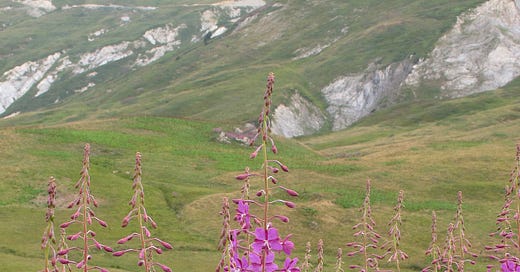Fireweed: Alaska's Floral Calendar
Every summer across Alaska, a vivid purple carpet blooms, marking the progression of the season. Fireweed, one of Alaska's most beloved wildflowers, erupts in a cascade of color that spreads from roadsides to mountainsides. Its blossoming period perfectly aligns with the brief but lively Alaskan summer, making this striking flower an accurate indicator of the seasons.
The Beginning of Summer
In late May and early June, as Alaska emerges from its long winter, the very first fireweed shoots poking up through the soil. Locals keep an eye out for these first early blooms, knowing that summer has now arrived. Children love to pick the dainty pink and purple buds, which hold an abundance of nectar. Traditionally, Alaska Native peoples mixed fireweed honey with salmon oil to create a nutritional springtime food.
Fireweed reaches up to 8 feet tall over the course of the summer, with colorful blossoms opening from the bottom up. By mid-June, fireweed blankets Southcentral Alaska while the northernmost plants are just awakening. When the summer solstice arrives on June 21, fireweed bursts forth in earnest, coinciding with the endless daylight
The Height of Summer
As July brings long, sunny days and warm temperatures, fireweed reaches its peak. The cotton grass has set its feathery seeds adrift, lupines have come and gone, but fireweed dominates the roadsides with its bright blossoms. Alaskans track its upward progress, knowing that when the flowers reach the very top, summer’s end is near. But for now, Alaskans delight in summer pastimes under the near-constant daylight. Fishing is at its prime, and Alaskans rejoice in the bounty of fresh salmon, trout, and halibut. Berries ripen for picking nearly everywhere, and fireweed nectar produces summer’s treasured honey crop. Children explore Alaska’s grandeur, gathering bouquets of fireweed as they hike and play.
According to folklore, fireweed got its name after forest fires, as it is one of the first plants to colonize scorched earth. It thrives in full sunlight, so a burned forest creates ideal conditions for rampant fireweed growth. Studies have shown fireweed blooming most prolifically one to three years after a fire, rejuvenating the forest ecosystem as it feeds pollinators with nectar and prepares the soil for new trees and plants. Just as fireweed recovers burned land, its blossoms bring color and joy back to Alaska after the deprivation of winter.
The Waning of Summer
In August, summer’s grip on Alaska begins relaxing, and fireweed mirrors the change. The blooms progress up the stalks as the lower flowers give way to long seed pods. Camping season and fishing start winding down, and thoughts turn toward autumn activities. Fireweed reaches the mountain passes first, so travelers watch its progress during road trips. When the blossoms top the stalks down low in the valleys, Alaskans know to expect autumn weather soon
Traditional life centered around fireweed’s seasons. Alaska Native peoples gathered stems in late summer to make fabrics and cords. As the flowers began vanishing, it was time to move inland and prepare drying racks for preserving salmon. Bears forage heavily on ripe berries in August, then move on to feast on final runs of salmon. The sweet fireweed nectar that sustained bees earlier also provides bears with energy to build up fat reserves before hibernation. For all Alaska’s creatures, fireweed’s waning signals the approaching winter.
The End of Summer
By late August or early September, fireweed has gone entirely to seed, ready to disperse feathery fluff when the winds arrive. Summer’s warmth has departed, bringing cooler nights, wetter days, and hints of color in the larches. With fireweed finished flowering, Alaskans accept that the growing season has ceased. Gardeners gather their last vegetables and prepare beds for next year. Thoughts turn toward snowy adventures like skiing, snowshoeing, and trapping
Yet even as Alaskans wave goodbye to summer, the final gift of fireweed remains. The dried stalks and fluffy seed arrangements persist through fall and into the winter, catching snow like little poles. When the fireweed tufts emerge above the drifts, they remind Alaskans that the endless summer days will bloom again. Once more, fireweed’s sprouting shoots will invite Alaskans to emerge from hibernation and revel in the returning sun. So while its blossoms are fleeting, this hardy flower remains a year-round beacon of hope for Alaskans.







